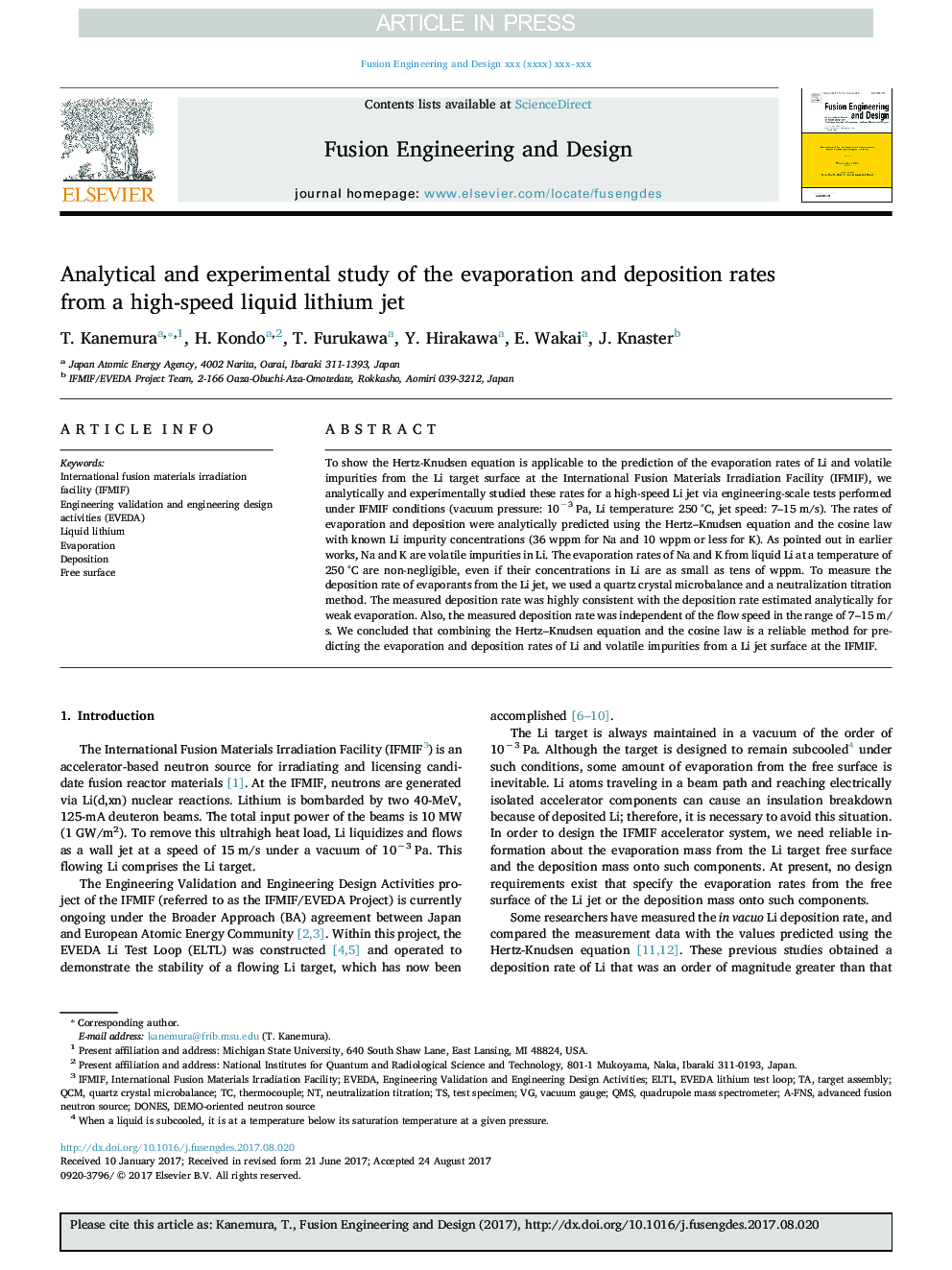| Article ID | Journal | Published Year | Pages | File Type |
|---|---|---|---|---|
| 6744646 | Fusion Engineering and Design | 2017 | 10 Pages |
Abstract
To show the Hertz-Knudsen equation is applicable to the prediction of the evaporation rates of Li and volatile impurities from the Li target surface at the International Fusion Materials Irradiation Facility (IFMIF), we analytically and experimentally studied these rates for a high-speed Li jet via engineering-scale tests performed under IFMIF conditions (vacuum pressure: 10â3 Pa, Li temperature: 250 °C, jet speed: 7-15 m/s). The rates of evaporation and deposition were analytically predicted using the Hertz-Knudsen equation and the cosine law with known Li impurity concentrations (36 wppm for Na and 10 wppm or less for K). As pointed out in earlier works, Na and K are volatile impurities in Li. The evaporation rates of Na and K from liquid Li at a temperature of 250 °C are non-negligible, even if their concentrations in Li are as small as tens of wppm. To measure the deposition rate of evaporants from the Li jet, we used a quartz crystal microbalance and a neutralization titration method. The measured deposition rate was highly consistent with the deposition rate estimated analytically for weak evaporation. Also, the measured deposition rate was independent of the flow speed in the range of 7-15 m/s. We concluded that combining the Hertz-Knudsen equation and the cosine law is a reliable method for predicting the evaporation and deposition rates of Li and volatile impurities from a Li jet surface at the IFMIF.
Related Topics
Physical Sciences and Engineering
Energy
Energy Engineering and Power Technology
Authors
T. Kanemura, H. Kondo, T. Furukawa, Y. Hirakawa, E. Wakai, J. Knaster,
